As everyone at K-State begins to settle into the new semester, we are taking exciting steps with the restoration of the Great Room. After months of cleaning, repairing, sanding and staining the wood from the Great Room ceiling, the first pieces have now made their way back to their original location.
Once the wood was cleaned and repaired, Phil Crabb, an employee of Riley Construction, joined the project to sand and stain the wood. He has been in the wood refinishing business for decades. After working on other projects, including historic Noble House in Wichita, Kan., Crabb says he wasn’t afraid to take on the task of restoring Hale Library’s Great Room woodwork.
“I walked in here and it was just piles of wood. Many of which have already been moved up from the floor. So it’s been stacked deep in here. I said this is an opportunity, it’s a challenge and it’s going to be a lot of fun. And every single day has been outstanding.”

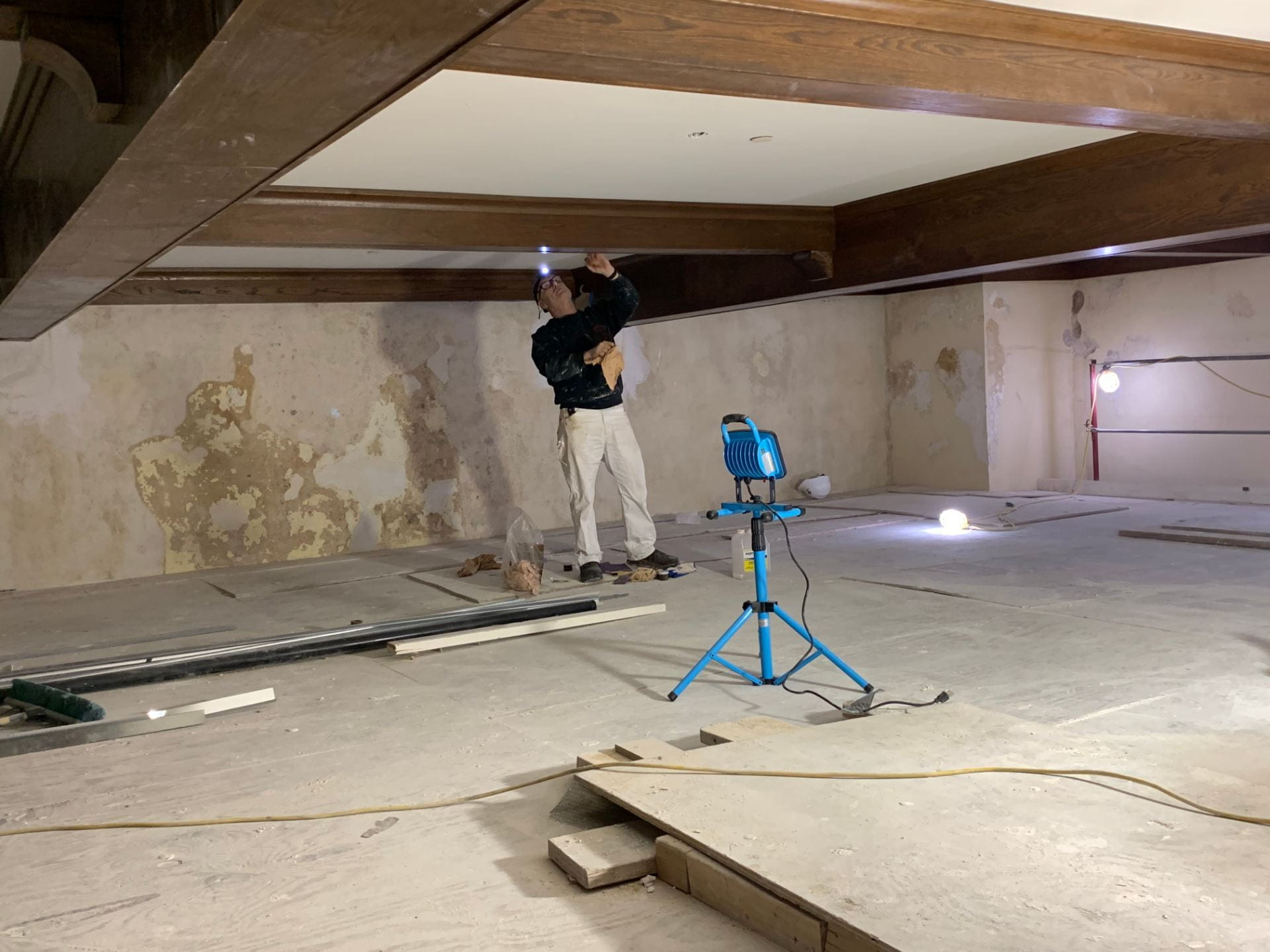
Some of the wood pieces in the Great Room were rotted and many needed repairs. Crabb says that after the wood was stripped, cleaned and sanded, they faced a new challenge: The wood would not stain correctly.
“The situation was that the restorationists had almost cleaned it too well. And so, all this wood, when stained, in our samples, would not take the dark stain. I took two weeks to make samples, and I’d be sitting there putting stain on, waiting for 20 minutes to wipe it off, and it still wouldn’t be dark enough.”
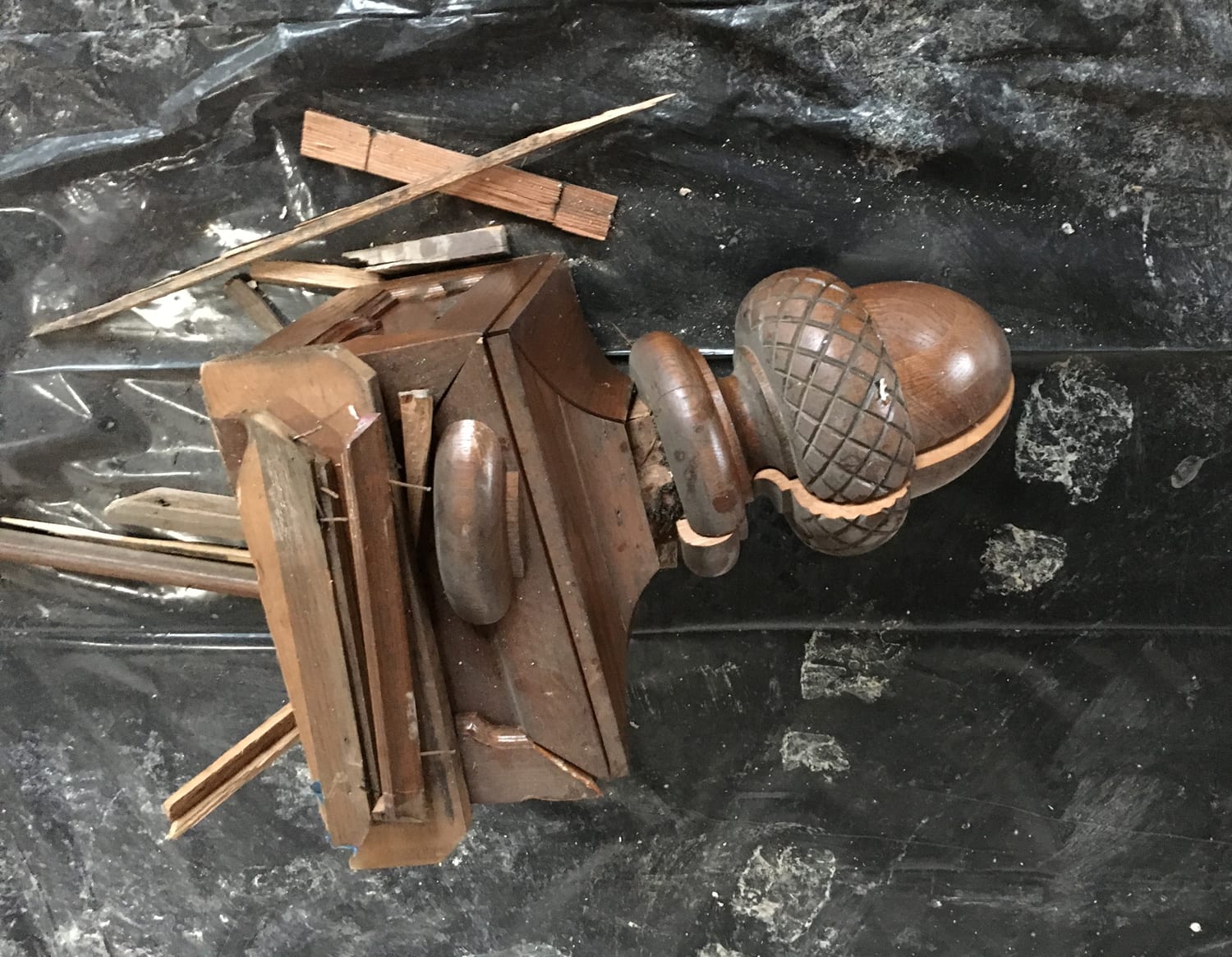
And so, Crabb turned to water popping, a process that uses water to reopen the grains of the wood to better allow it to stain without any blotches or different-colored spots. The process requires dunking each wood piece in water to soak it, then letting it dry for a least two hours before staining. After using 110 gallons of distilled water, the woodwork turned out beautiful Crabb says.
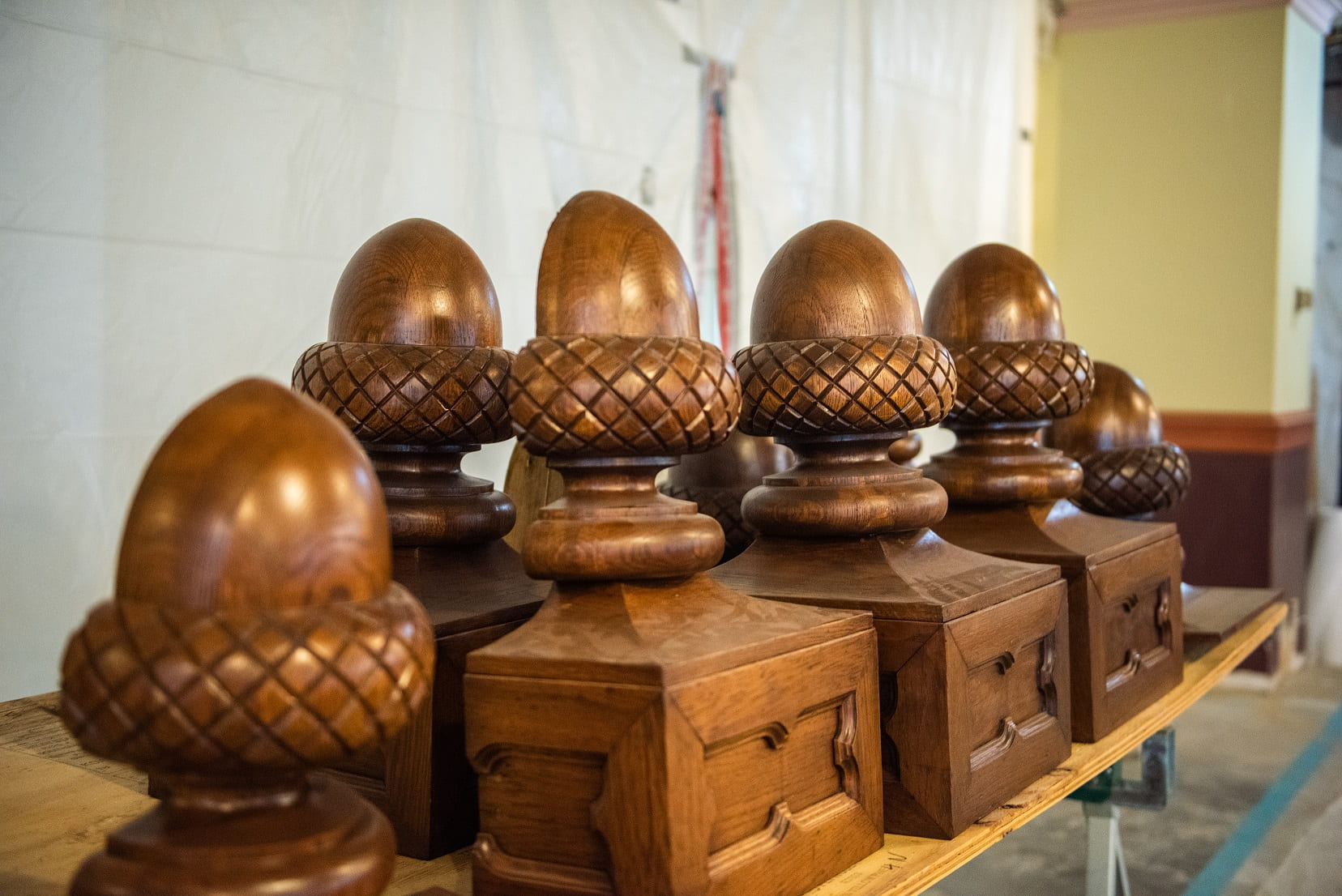
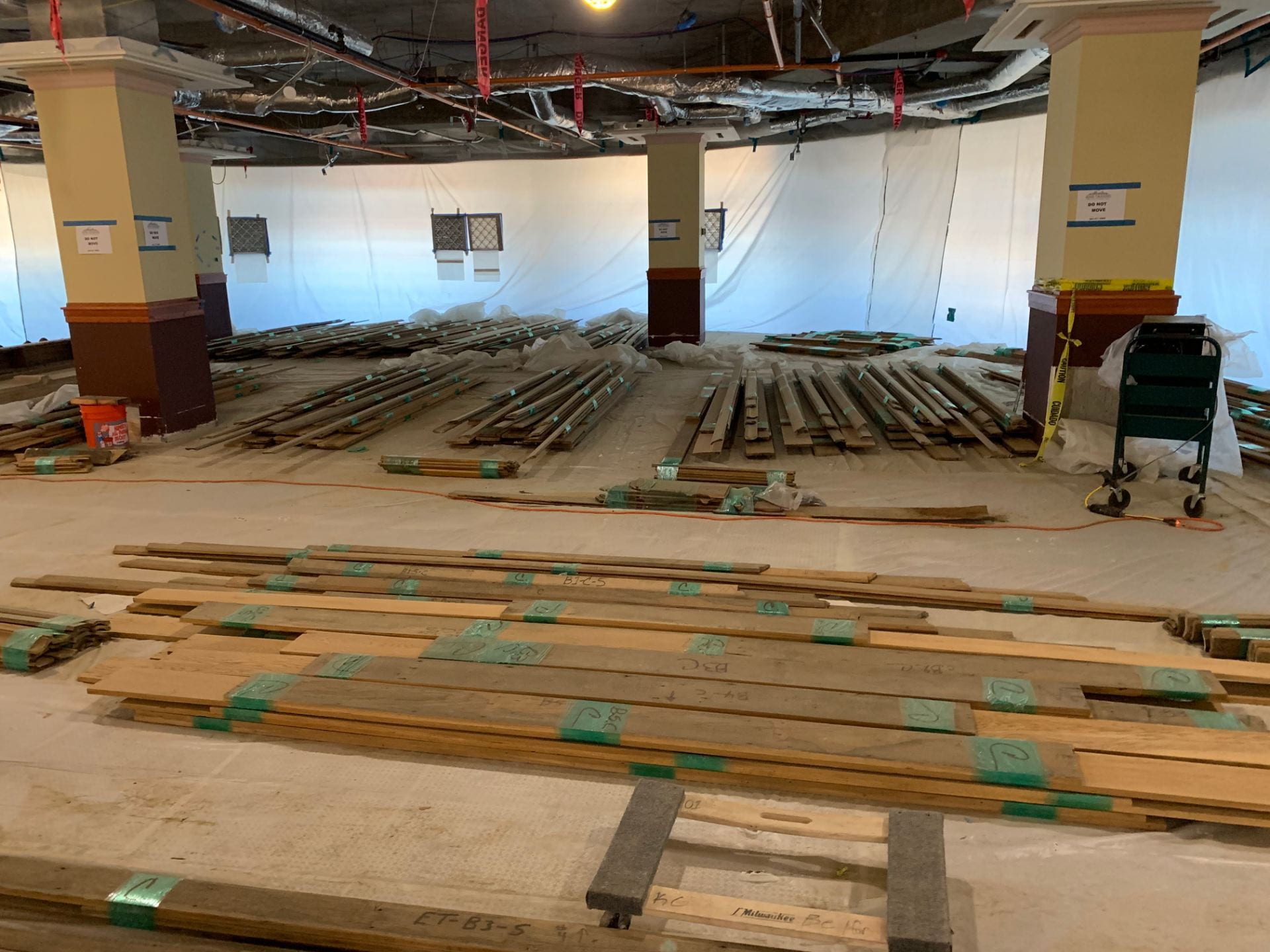
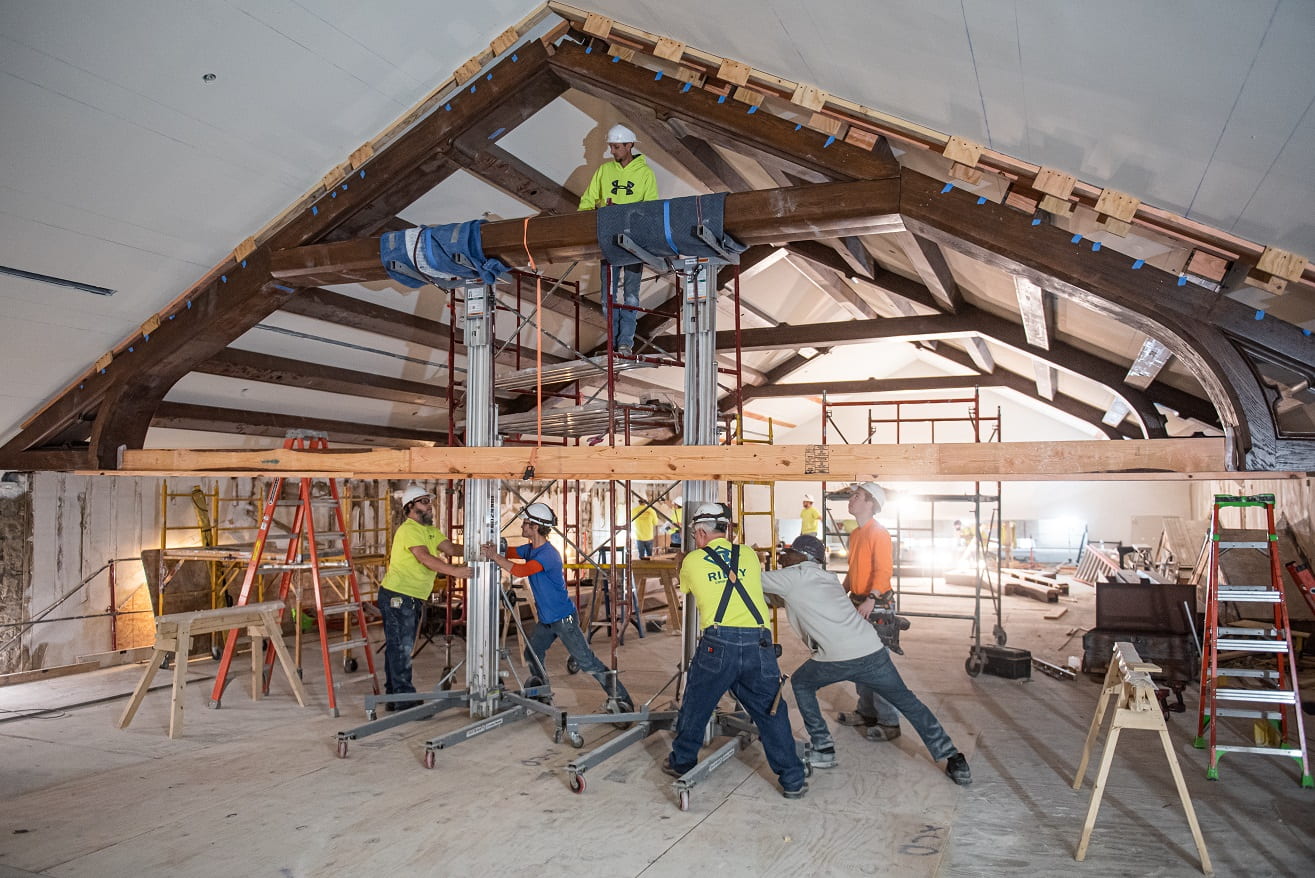
Crabb’s mother, Mary Anne McNamee, was a 1943 graduate of K-State who loved the Great Room and studied there often. Additionally, Crabb says he also has a special connection with the Great Room that has made this project all the more meaningful to him.
“I’m not a graduate here, but I’m an alumni in the sense that I’ve taken several courses. I used to go and read in the great room, in Hale room 308, and you know, you get up from your reading and you take a look at the antiquarian books, you look at the murals. There’s something about tall ceilings in roomy environments that’s really good for the mind.”